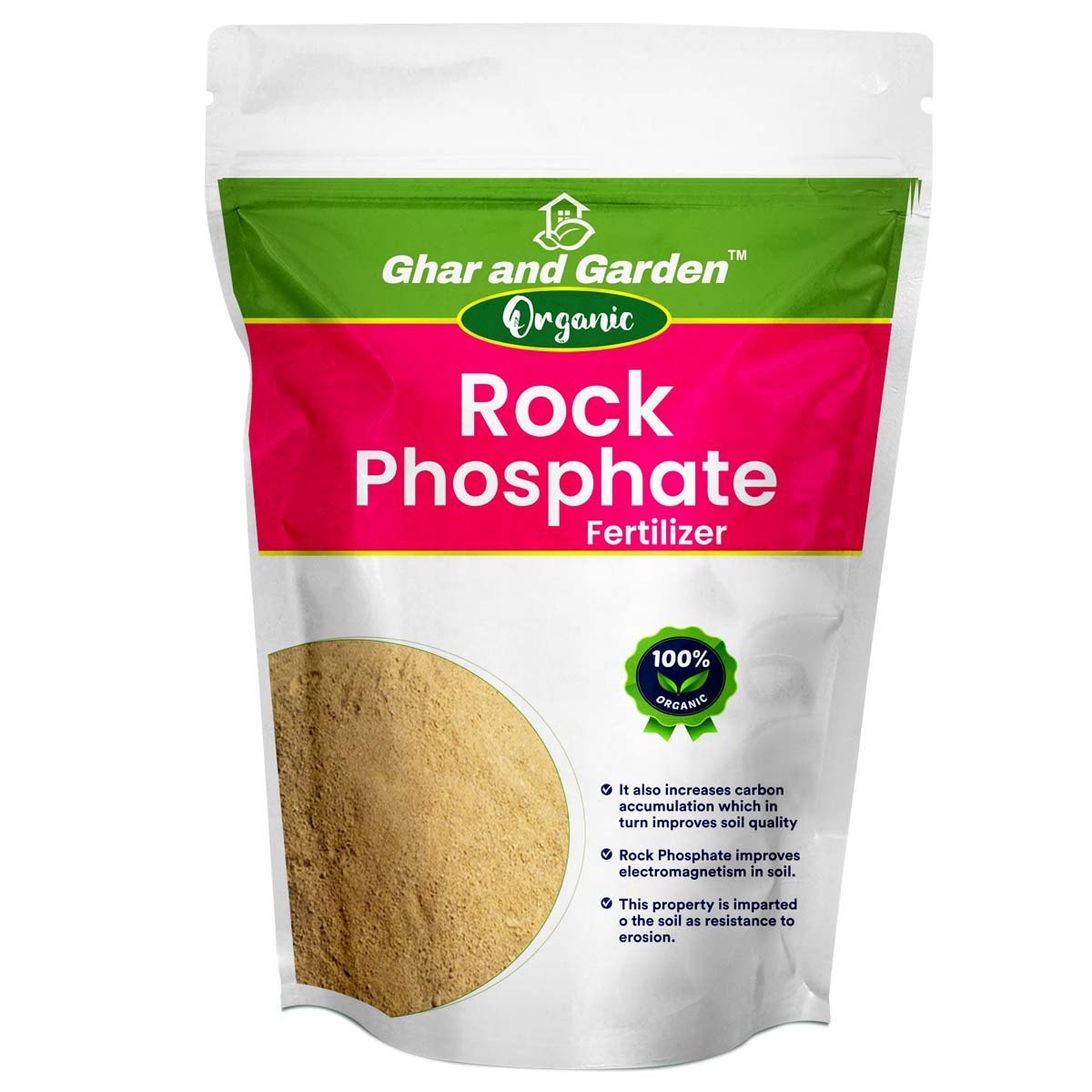40 Rock fertilizer is a type of mineral-based soil amendment primarily composed of finely ground rock phosphate. Its name derives from the 40% available phosphate content, which makes it a rich source of phosphorus, one of the most essential nutrients for plant development. Unlike synthetic fertilizers that release nutrients quickly, 40 Rock fertilizer works slowly, breaking down over time and providing a long-term nutrient source for plants. This slow-release feature makes it a popular choice among organic gardeners and sustainable farmers who prefer to avoid chemical-based products.
This fertilizer is often produced from natural rock deposits that are mined and ground into a fine powder or granular form. Because of its natural origin, 40 Rock fertilizer is approved for organic farming in many regions, making it suitable for gardeners who wish to maintain soil health while avoiding chemical residues. Its mineral composition not only boosts phosphorus levels but can also contribute small amounts of calcium and trace minerals, depending on the source rock.
The primary benefit of 40 Rock fertilizer is its ability to improve soil fertility over time. Phosphorus plays a critical role in energy transfer within plants, root development, and flower or fruit production. Soils deficient in phosphorus often result in stunted plant growth, poor flowering, and weak root systems. Using a natural phosphorus source like 40 Rock fertilizer is an effective way to correct this deficiency while enriching the soil with long-lasting nutrients.
Table of Contents
The Importance of Phosphorus in Plant Growth

Phosphorus is one of the three macronutrients essential for plant growth, alongside nitrogen and potassium. Its primary role is to support energy transfer within the plant, particularly through adenosine triphosphate (ATP), which is crucial for photosynthesis and other metabolic processes. Without sufficient phosphorus, plants struggle to produce strong root systems, develop robust stems, and generate flowers or fruits efficiently.
In the early stages of plant growth, phosphorus is essential for seed germination and root establishment. Crops like tomatoes, peppers, corn, and root vegetables rely heavily on phosphorus to create healthy root networks capable of absorbing water and nutrients effectively. During the flowering and fruiting stages, phosphorus enhances bloom production and improves the quality of fruits or seeds.
Soils naturally deficient in phosphorus often show visible signs such as dark green or purplish leaves, delayed maturity, and poor yields. While chemical fertilizers can quickly address these issues, they often lead to nutrient leaching and soil degradation over time. 40 Rock fertilizer, on the other hand, releases phosphorus gradually, maintaining soil structure and reducing the risk of over-fertilization.
How 40 Rock Fertilizer Differs from Other Phosphate Fertilizers
One of the key differences between 40 Rock fertilizer and other phosphate fertilizers lies in its solubility. Chemical phosphate fertilizers like superphosphate or triple superphosphate are highly water-soluble, delivering an immediate nutrient boost but often washing away quickly with rainfall or irrigation. This not only wastes nutrients but can also lead to water pollution through runoff.
40 Rock fertilizer, in contrast, is only partially soluble and becomes available to plants through microbial activity and soil acidity. Beneficial soil microorganisms gradually break down the rock particles, releasing phosphorus at a steady rate. This slow-release characteristic makes it ideal for long-term soil fertility management, particularly in perennial gardens, orchards, and pastures.
Another notable difference is its organic certification. Many synthetic fertilizers are not suitable for organic farming due to their chemical processing, whereas 40 Rock fertilizer is generally approved for use in organic systems. Additionally, it contributes small amounts of calcium and other micronutrients, which further improve soil structure and plant health.
Ideal Soil Conditions for Using 40 Rock Fertilizer
The effectiveness of 40 Rock fertilizer depends largely on soil conditions, particularly pH and microbial activity. It works best in acidic soils where natural chemical reactions and microbial processes can release phosphorus more efficiently. In alkaline soils with high pH levels, the phosphorus in rock phosphate tends to remain locked and unavailable to plants.
Soils rich in organic matter and beneficial microorganisms enhance the breakdown of 40 Rock fertilizer. Compost, cover crops, and other organic amendments help increase microbial populations, which in turn accelerate the conversion of rock phosphate into plant-available forms. Therefore, integrating 40 Rock fertilizer with organic soil-building practices often leads to better results.
Because of its slow-release nature, gardeners should not expect immediate results after application. Instead, it gradually builds up soil fertility, making it more suitable for long-term soil improvement rather than quick nutrient fixes. For best performance, it should be applied several weeks before planting or incorporated into soil during the off-season to give microbes time to process the nutrients.
How to Properly Apply 40 Rock Fertilizer
Correct application of 40 Rock fertilizer is essential to maximize its benefits. It is typically worked into the soil rather than left on the surface because direct contact with plant roots and soil microbes speeds up its availability. When preparing garden beds or farm plots, mixing it into the top 4 to 6 inches of soil ensures better nutrient distribution.
For new garden beds or crop fields, applying 40 Rock fertilizer before planting provides plants with a phosphorus-rich environment as soon as their roots begin to grow. In perennial gardens, orchards, or established landscapes, it can be applied around the root zone during the dormant season or early spring. Over time, repeated applications help maintain steady phosphorus levels in the soil.
Moisture plays a significant role in the breakdown process. Adequate soil moisture supports microbial activity, which is crucial for converting rock phosphate into forms plants can absorb. Gardeners should also avoid over-applying, as excessive amounts can disrupt soil nutrient balance. Testing soil phosphorus levels before application helps determine the appropriate rate for each crop or garden area.
Combining 40 Rock Fertilizer with Other Soil Amendments
For maximum growth, many gardeners combine 40 Rock fertilizer with other soil amendments to create a balanced nutrient profile. Because 40 Rock primarily supplies phosphorus and some calcium, it should be complemented with nitrogen- and potassium-rich fertilizers when necessary. Compost, manure, and green manures are excellent organic sources of nitrogen and potassium that also enhance microbial activity.
Adding mycorrhizal fungi to the soil can further increase phosphorus uptake from 40 Rock fertilizer. These beneficial fungi form symbiotic relationships with plant roots, extending their reach into the soil and accessing nutrients that would otherwise remain unavailable. This combination is especially effective for fruiting vegetables, trees, and shrubs.
In acidic soils, 40 Rock fertilizer naturally dissolves over time, but in neutral or slightly alkaline soils, gardeners sometimes add elemental sulfur or acidic composts to lower pH and improve phosphorus availability. These complementary practices ensure plants receive the maximum benefits from the slow-release fertilizer.
Best Crops and Plants for 40 Rock Fertilizer
Crops and plants that require strong root systems and abundant flowering respond particularly well to 40 Rock fertilizer. Root vegetables like carrots, beets, and potatoes benefit from increased root development, resulting in better size and quality. Fruiting plants such as tomatoes, peppers, and eggplants also thrive due to improved flowering and fruit set.
In orchards, phosphorus is critical for trees like apples, peaches, and citrus, where strong roots and consistent flowering determine long-term productivity. Perennial flowers and ornamental shrubs also show significant improvement in bloom production when grown in phosphorus-rich soils.
Pastures and forage crops, especially legumes like clover and alfalfa, respond positively to 40 Rock fertilizer as phosphorus encourages root nodulation and nitrogen fixation. Over time, its slow-release nature makes it ideal for maintaining long-term fertility in these systems.
Long-Term Benefits of Using 40 Rock Fertilizer
The benefits of 40 Rock fertilizer go beyond immediate plant growth. Its gradual nutrient release contributes to improved soil structure and long-lasting fertility. Unlike synthetic fertilizers that can deplete soil organic matter, 40 Rock encourages microbial diversity and activity, leading to healthier soil ecosystems.
Because it is a natural mineral product, it does not pose the same risk of nutrient leaching or groundwater contamination as highly soluble chemical fertilizers. This makes it an environmentally friendly option for gardeners who prioritize sustainable practices. Over several growing seasons, soils enriched with rock phosphate often show improved water retention, better root penetration, and higher overall productivity.
The trace minerals present in some rock phosphate sources also contribute to plant health. Calcium, for instance, strengthens cell walls and improves fruit quality, while micronutrients support various physiological processes. These added benefits make 40 Rock fertilizer an excellent choice for gardeners who want to build soil health gradually while achieving reliable plant growth.
Common Mistakes to Avoid When Using 40 Rock Fertilizer
A frequent mistake gardeners make with 40 Rock fertilizer is expecting rapid results. Its slow-release nature means plants may take weeks or even months to show noticeable improvement, particularly in cold or dry soils where microbial activity is low. Impatience often leads to over-application, which can disturb soil nutrient balance.
Another mistake is using it in alkaline or very high-pH soils where phosphorus remains largely unavailable. In such cases, soil amendments or acidifying materials should be used to adjust pH before applying 40 Rock fertilizer. Applying it to extremely compacted or lifeless soils with poor microbial activity also limits its effectiveness, as microorganisms are necessary for breaking down the rock particles.
Some gardeners also neglect to conduct soil testing before application, leading to either under-fertilization or excessive buildup of phosphorus over time. Regular soil tests ensure the correct application rate and help maintain balanced nutrient levels for optimal plant growth.
FAQs about 40 Rock Fertilizer
What is 40 Rock Fertilizer made of?
40 Rock Fertilizer is primarily made from natural rock phosphate containing around 40% available phosphorus. It is ground into fine particles or granules to make it easier for soil microbes to break down. This natural composition makes it suitable for organic farming and sustainable gardening.
How long does it take for 40 Rock Fertilizer to work?
Unlike chemical fertilizers, 40 Rock Fertilizer works slowly because it relies on soil microbes to release nutrients. In warm, moist, and biologically active soils, plants may begin to benefit within a few weeks, but full effects are often noticeable after several months, making it ideal for long-term soil improvement.
Can 40 Rock Fertilizer be used in all types of soil?
It performs best in slightly acidic to neutral soils where microbial activity is high. In alkaline soils, phosphorus may remain locked and unavailable to plants. Adding compost, sulfur, or other organic matter can help improve phosphorus availability in less-than-ideal soil conditions.
What plants benefit the most from 40 Rock Fertilizer?
Root vegetables, fruiting crops like tomatoes and peppers, flowering perennials, and orchard trees benefit the most due to their high phosphorus requirements. Legumes in pastures also respond well as phosphorus boosts nitrogen fixation and strong root development.
Is 40 Rock Fertilizer safe for organic gardening?
Yes, it is approved for organic gardening in many regions because it is a naturally occurring mineral with no synthetic chemicals. Its slow-release nature supports soil health, encourages beneficial microbes, and reduces the risk of nutrient runoff compared to chemical fertilizers.
Final Thoughts on Maximizing Growth with 40 Rock Fertilizer
40 Rock fertilizer is a reliable, organic-friendly source of phosphorus that improves plant growth, flowering, and fruiting over time. Its slow-release nature makes it ideal for long-term soil fertility management, especially in sustainable and organic gardening systems. When combined with good soil-building practices, adequate moisture, and complementary fertilizers, it significantly enhances plant health and productivity.
Understanding how it works, where it performs best, and how to apply it correctly is crucial for achieving maximum growth. Gardeners who focus on improving soil health rather than seeking quick nutrient fixes will find 40 Rock fertilizer to be an excellent investment in both soil and plant vitality. Over time, it not only supports healthy crops but also contributes to building a fertile, thriving garden ecosystem.






